Borobudur Temple is the most famous temple in the world, they have become one of the magical objects, became one of the miracles of the world. The world recognizes that this is indeed true Borobudur is Indonesia made original ancestors.
1. Muara Takus Temple
Muara Takus (Indonesian: Candi Muara Takus) is a Buddhist temple complex, thought to belong to the Srivijaya empire. It is situated in Kampar Regency in Riau province, Sumatra, Indonesia. Its surviving temples and other archaeological remains are thought to date to the eleventh and twelfth century AD. It is one of the largest and best-preserved ancient temple complexes in Sumatra.
2. Mount Wukir Temple
Mount Wukir Temple (Indonesian: Candi Gunung Wukir) located on the Mount Wukir, the surrounding community called Mount Wukir, on the western slopes of Mount Merapi. This location is in the northeast city of Muntilan. Mount Wukir Temple can be reached by public transport in the direction of District of Ngluwar up Kadiluwih village , which are connected by walking up the hill .
3. Kalasan Temple
Kalasan (Indonesian: Candi Kalasan), also known as Candi Kalibening, is an 8th-century Buddhist temple in Indonesia. It is located 13 km east of Yogyakarta on the way to Prambanan temple, on the south side of the main road 'Jalan Solo' between Yogyakarta and Surakarta. Administratively, it is located in the Kalasan District of Sleman Regency.
4. Gedongsongo Temple.
Gedong Songo (Indonesian: Candi Gedong Songo) is a Hindu temple located in Central Java, Indonesia. The site was originally built during early period of Medang Kingdom which controlled Central Java during the 8th and 9th centuries. Similar to Dieng Plateau, Gedong Songo was erected out of volcanic stone and the two complexes represent the oldest Hindu structures in Java. Dieng and Gedong Songo predate Borobudur and Prambanan. The temples of Gedong Songo reflect a similar architectural structure to the Dieng Plateau. However, Gedong Songo displays more emphasis on plinth and cornice moulding. At Temple 3, an entrance is outlined by a vestibule that is decorated by guardian figures.
5. Mendut Temple
Mendut is a ninth-century Buddhist temple, located in Mendut village, Mungkid sub-district, Magelang Regency, Central Java, Indonesia. The temple is located about three kilometres east from Borobudur. Mendut, Borobudur and Pawon, all of which are Buddhist temples, are located in one straight line. There is a mutual religious relationship between the three temples, although the exact ritual process is unknown.
6. Borobudur Temple
Borobudur, or Barabudur, is a 9th-century Mahayana Buddhist Temple in Magelang, Central Java, Indonesia. The monument consists of six square platforms topped by three circular platforms and is decorated with 2,672 relief panels and 504 Buddha statues. A main dome, located at the center of the top platform, is surrounded by 72 Buddha statues each of which is seated inside a perforated stupa. It is the world’s largest Buddhist temple, as well as one of the greatest Buddhist monuments in the world.
7. Sewu Temple
Sewu is an 8th-century Mahayana Buddhist temple located 800 meters north of Prambanan in Central Java. Candi Sewu is actually the second largest Buddhist Temple in Indonesia after Borobudur. Candi Sewu predates nearby "Loro Jonggrang" temple. Although originally only around 249 temples are present, the name in Javanese translates to 'a thousand temples,' which originated from popular local folklore; The Legend of Loro Jonggrang. The original name of this temple compound is probably Manjusrigrha.
8. Pawon Temple
Pawon (known locally as Candi Pawon) is a Buddhist temple in Central Java, Indonesia. Located between two other Buddhist temples, Borobudur (1.75 km (1.09 mi) to the northeast) and Mendut (1.15 km (0.71 mi) to the southwest), Pawon is connected with the other two temples, all of which were built during the Sailendra dynasty (8th–9th centuries). Examines the detail and style of its carving this temple is slightly older than Borobudur.
9. Sari Temple
Sari Temple (Indonesian: Candi Sari also known as Candi Bendah), is an 8th-century Buddhist temple located at Dusun Bendan, Tirtomartani village, Kalasan, Sleman regency, Yogyakarta. It is located about 130 metres north east from Kalasan temple.
10. Ngawen Temple
Ngawen (known locally as Candi Ngawen) is an 8th-century Buddhist temple compound in Magelang Regency, Central Java, Indonesia. Located in Ngawen village, Muntilan sub-district, 6 km (3.7 mi) to the east of Mendut temple or 5 km (3.1 mi) to the south of Muntilan town center. Ngawen temple compound consists of five temples, however today only one is successfully reconstructed.
11. Dieng Temple
Dieng temples is the group of 7th century Hindu temple compound located in Dieng Plateau, near Wonosobo, Central Java, Indonesia. The plateau is home of eight small Hindu temples that are among the oldest surviving religious structure ever built in Java.
12. Prambanan Temple
Prambanan or Candi Rara Jonggrang is a 9th-century Hindu temple compound in Central Java, Indonesia, dedicated to the Trimurti, the expression of God as the Creator (Brahma), the Preserver (Vishnu) and the Destroyer (Shiva). The temple compound is located approximately 17 kilometres (11 mi) northeast of the city of Yogyakarta on the boundary between Central Java and Yogyakarta provinces.
The temple compound, a UNESCO World Heritage Site, is the largest Hindu temple site in Indonesia, and one of the biggest in Southeast Asia. It is characterized by its tall and pointed architecture, typical of Hindu temple architecture, and by the towering 47-metre-high (154 ft) central building inside a large complex of individual temples. Prambanan attracts many visitors from across the world.
13. Gunung Kawi Temple
Gunung Kawi is an 11th-century temple complex in Tampaksiring north east of Ubud in Bali, Indonesia.,[1] that is spread across either side of the Pakerisan river. It comprises 10 rock-cut candi (shrines) that are carved into some 7-metre-high (23 ft) sheltered niches of the sheer cliff face. These funeral monuments are thought to be dedicated to King Anak Wungsu of the Udayana dynasty and his favourite queens. On the east side there are five temples that are dedicated, according to one theory, to King Udayana, his queen Mahendradatta, and their sons Airlanga, Anak Wungsu, and Marakata. The temples on the west side are dedicated, according to the same theory, to the king's minor queens or concubines.
14. Kidal Temple
Kidal (Indonesian: Candi Kidal) is a Hindu temple built under the Singhasari dynasty. It is situated in the Rejokidal village in the Tumpang district of East Java, approximately 20 km east of Malang. The temple was built around 1248 and restored in the 1990s. The temple is composed of three levels that are situated on a raised platform. At the foot of the temple, three Javanese masks depict the story of Garuda. The temple may have encased an image of Shiva depicted by the portrait of the Singhasari king, Anusapati.
15. Jago Temple
Jago temple (Indonesian: Candi Jago) is a 13th-century Hindu temple from the Singhasari kingdom in East Java, Indonesia, located about 22 km from Malang. The Nagarakretagama written in 14th century mentioned this temple as Jajaghu, as one of the temples visited by King Hayam Wuruk during his royal tour across East Java.
16. Singasari Temple
Singosari temple, also known as Kendedes temple, was founded in honor to King Kertanegara, the last king of Singosari dynasty who died in 1292 AD. It was erected in 1300 AD at the same time when the ritual Sradha took place. In the vicinity of the temple there are two gigantic statue called Dwarapala, believed to be the entrance guards to the palace.
17. Penataran Temple
Penataran or Panataran (Indonesian: Candi Penataran) is the largest Hindu temple complex in East Java, Indonesia,located roughly 10 km north of Blitar. Believed to have been under construction from the 12th Century to the 15th Century, the temple played a significant role in the Majapahit Kingdom, especially under King Hayam Wuruk.
Penataran was believed to be dated back to Kediri era. This temple was identified in Nagarakretagama as Palah temple and reported being visited by King Hayam Wuruk during his royal tour across East Java.
The site is being considered to be put on the World Heritage list of sites that have "outstanding universal value" to the world.
18. Sawentar Temple
Sawentar Temple is located at Sawentar village, Kanigoro district, to the east of Blitar. The temple shows similarities in form to Kidal temple. A tentative date of around the early to mid 13th century has consequently been assigned to it. The base of the temple lies several meters below the present ground level, a result of having been buried under a mass of lava, presumably from an eruption of nearby Mt Kelud.
19. Sumberjati Temple
Sumberjati Temple (Indonesian : Candi Simping atau Candi Sumberjati) is a temple located in Sumberjati, Blitar, Indonesia . This temple is the tomb of Raden Wijaya who died in 1309.
20. Tegawangi Temple
Tegawangi temple is located in Tegowangi village of Plemahan subdistrict around 24 Km from Kediri, East Java. It is around 1 km from access road and hidden among village houses, but the vicinity is well preserved. The Hindu temple is estimated to be built in the end of 14th century by the order of King Hayam Wuruk to purify his cousin Bhre Matahun.
It is mentioned in the book of Pararaton that Bre Matahun died in the Javanese year of 1310 (1388 AD) and was buried in Tegawangi. Tegawangi temple faces west, and is laid out on a square base 11.20 m in width and stands 4.29 meter high. The temple is made of andesite stone, bigger than the Surawana temple in Kediri. The temple is in worse condition than the Surawana is, with only the base and small fractions of its body remain.
21. Surawana Temple
Surawana (Indonesian: Candi Surawana, sometimes called Candi Surowono) is a Hindu temple, of the Majapahit Kingdom, located in the Canggu village of the Kediri near Pare district in East Java, Indonesia. It was believed to have been built in 1390 AD as a memorial to Wijayarajasa, the Prince of Wengker. As of today the temple is not fully intact. Only the base of the temple has been restored to its original form and many more bricks are waiting around the structure to be reassembled.
22. Tikus Temple
Tikus Temple is located in Dinuk hamlet, Temon village, Trowulan Subdistrict, Mojokerto Regency, East Java, 13 kilometers to the southeast of Mojokerto. To reach the temple site, visitors, when taking the highway connecting Mojokerto and Jombang, turn left through Segaran Pool and Bajangratu Temple which are located on the left. Tikus temple is also on the left of the street, around 600 m from Bajangratu temple.
23. Jabung Temple
Jabung is a 14th-century Buddhist temple dated from Majapahit era, located in the Jabung Sisir village (desa), Paiton area, Probolinggo district, East Java. The temple is made from red brick measuring 16.20 metres. The temple was mentioned in Nagarakretagama as Bajrajinaparamitapura (Vajra Jina Paramita Pura), being visited by king Hayam Wuruk during his royal tour across East Java in 1359 CE. The temple is mentioned in Pararaton as Sajabung, a mortuary temple of Bhre Gundal, a member of Majapahit royalties.
24. Cangkuwang Temple
Cangkuang (Indonesian: Candi Cangkuang) is a small 8th-century Shivaist candi (Hindu temple) located in Kampung Pulo village, Cangkuang, Kecamatan Leles, Garut Regency, West Java, Indonesia. The temple is one among the few Hindu-Buddhist temples ever discovered in West Javan region, other temples includes Batujaya and Bojongmenje temple.
25. Ijo Temple
Ijo temple (Indonesian: Candi Ijo) is a Hindu candi (temple) located 4 kilometers from Ratu Boko or around 18 kilometers east from Yogyakarta, Indonesia. The temple was built between 10th to 11th century CE during the Mataram Kingdom period.
That's twenty- five temples in Indonesia .
Maybe there are not included here, of course, considering that Indonesia is rich in historic temples are recognized by the world.
loading...
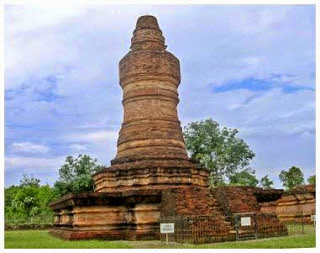

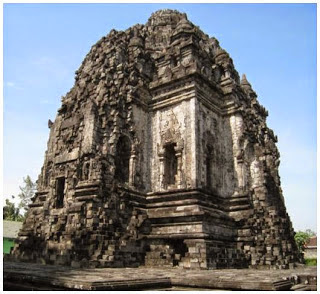



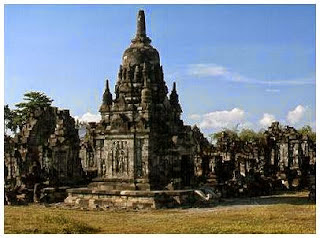
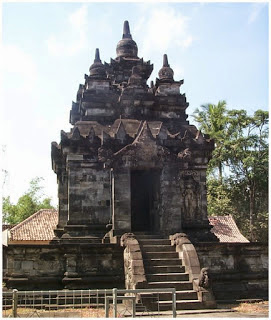




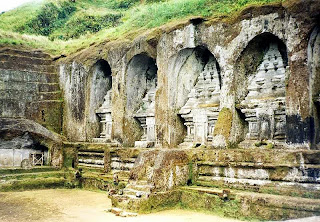




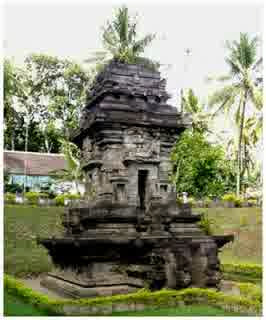


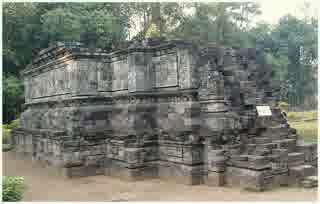
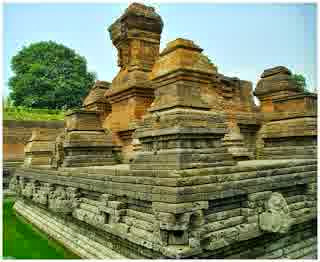



0 Comment:
Post a Comment